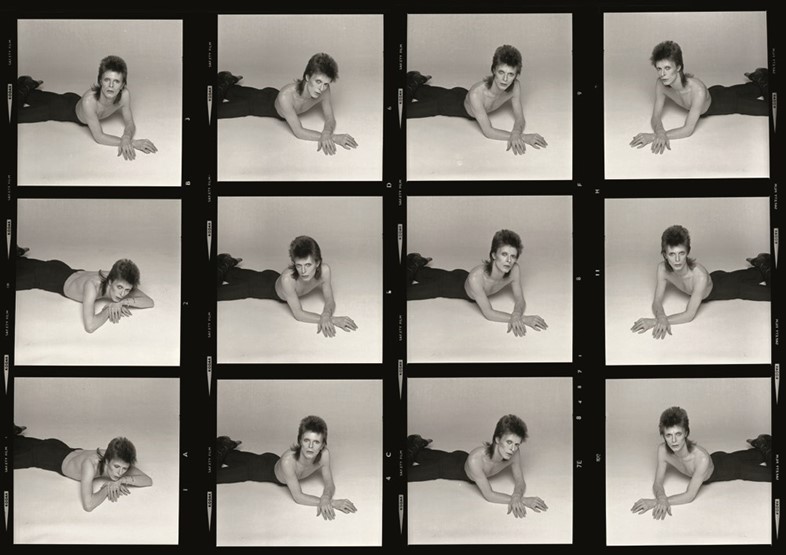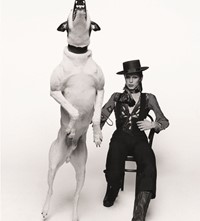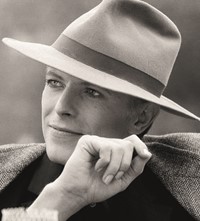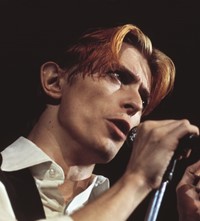Speaking to Another Man, photographer Terry O’Neill recalls his encounters with the elusive ‘Thin White Duke’
- TextJoobin Bekhrad
By the mid-60s, Terry O’Neill had had enough. Yes, he’d captured the likes of The Beatles and The Stones on camera, but there were also less glamorous subjects he’d had to deal with as a salaried photojournalist, such as the wreckage of a horrific plane crash in Croydon. After calling it quits with his paper, O’Neill decided to duke it out solo as a gun for hire, albeit not without trepidation at first. His fears, however, turned out to be unfounded, for he soon went on to work with some of the most iconic entertainers of his generation, among them, a “tall, lanky, pale boy with shockingly red short hair”.
When O’Neill met David Bowie at the Marquee Club on October 20, 1973, the latter was the new king of glam, having beaten his childhood friend and rival Marc Bolan at his own game. The Ziggy Stardust character, however, had only hours left to live, for Bowie axed him later that day during the 1980 Floor Show performance. In the years that followed, the protean rock and roll star slicked back his hair, ditched the glitter, grew his eyebrows out, and shot his septum to hell. While it is this Bowie – the elusive ‘Thin White Duke’ – that is the focus of O’Neill’s newly published book, Bowie by O’Neill, the octogenarian snapper had more to say about Ziggy’s final moments (and the late star’s pre-1974 tour days in general) in an interview with Another Man.
“I went down [to the Marquee Club] having no idea what to expect. I went in and there were all these fans lined up and each one looked different from the next. Lots of them had make-up on – the boys, too – and when I went backstage I found out why. David was dressed in a tight spiderweb-like bodysuit. It was very glam rock, with a bit of late-60s thrown in.
“A decade before [the 1980 Floor Show], I worked with Marianne Faithfull – right when she was starting out. And she was going to be there at the Marquee performing for the show, too. David and Marianne would be doing a duet. When the time came to perform the duet – I think it was I Got You Babe – David came out dressed in tight red leather – or was it plastic? You know what I’m talking about. I think he was supposed to look a little like the devil. Then comes Marianne, dressed head-to-toe in a nun’s habit. Completely covered. Or so I thought. When I worked my way to the back of the stage, I turned around to take some photos and saw that her outfit was completely open at the back. And it was revealed – to me and anyone who saw her from behind – that she had nothing underneath. I wonder who had the idea? You would think it was David, wouldn’t you? But I wouldn’t put it past Marianne [laughs].
“There was [another] unexpected moment during that Marquee performance. Something I didn’t even see until I looked at the photographs. One of David’s costumes was a bodysuit that had a lot of cut-outs, one leg was bare. During one of the performances, he was singing up a storm and at one point, got on the ground on his knees. There are a few of my pictures that – if you look closely – you saw a lot more of David than television would allow. What do they call it? A wardrobe malfunction?
“After looking at all my photos in the book, I have to go back to the Marquee performance. I was only there a day, remember. And in that day, I managed to capture David on-stage in full performance, backstage getting dressed, backstage having a quiet moment. We also found these really wonderful photos of David – dressed casually in jeans and a T-shirt – coaching Marianne, laughing with her. Really nice, quiet moments. I look at these now and think: wow, I really did manage to capture so many sides of him – all in a single day.

“I think I took the most memorable [photographs of Bowie] when I worked on the album and press for Diamond Dogs. Most of the pictures I did are included in this book, including the photos of the dog! I did these so that the artist Guy Peellaert could use them for his painting of the album cover. Seeing my photographs in [Peellaert’s] work and how he basically merged two of my photos – David Bowie’s head on the body of a dog – was pretty genius. Looking at my original contact sheets for the ‘jumping dog’ series, I can still hear that dog barking every time the flash went off! I’m amazed I got as many photos as I did! When that dog looked like it was really going to make a run for it – that’s when we finally stopped.
“He was an actor, that’s what I keep telling people, and that’s how I worked with him. He’d come in and be someone totally different. At the start, I think the drugs and lifestyle was wearing its toll on him, though. You can see that for yourself – when he met Elizabeth [Taylor] in 1975 – he’s so, so thin. A few years later, when I went to recording studio when he was doing Young Americans – probably my favourite album of his – he was starting to look a bit better.
“I think David was protective over his image because he did spend a great deal of time thinking about how he would appear, visually. All my work with him was scheduled – I never took photos when I wasn’t working, and he knew that and respected that. He was great, he really was. When we did portraits, he was his best stylist. He always came in knowing exactly what he was going to wear, how to pose, what props he’d hold. And I’d share some of the contact sheets with him. I have one in my archive – from the ‘yellow suit’ sitting – where David marked up the sheet and circled and initialled one frame with ‘DB’.
“[Elton John, Frank Sinatra, and David Bowie] taught me a very similar lesson, and that was to stay out of the way. Sinatra told me to be a fly on the wall. I came in and did my job. I tried not to get involved, not to interrupt what they were doing, and I tried to capture something through my images. The fact that here they are, so many years later, and people want to see them and want to talk to me about my experiences, well, it’s a gift. And I’m really humbled to be asked.”
Bowie by O’Neill: The Definitive Collection with Unseen Images, by Terry O’Neill, published by Cassell Illustrated.















